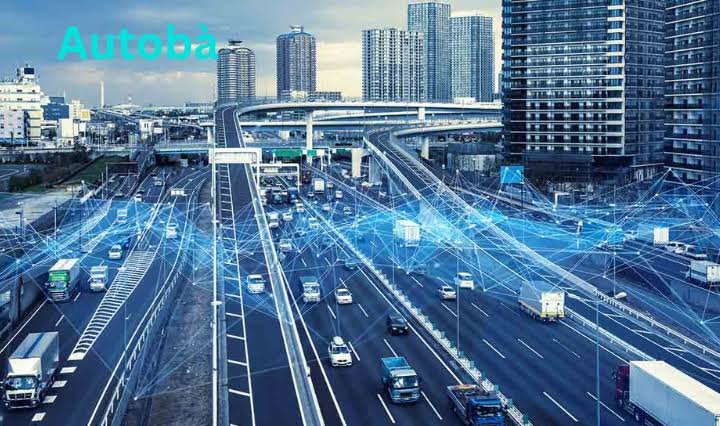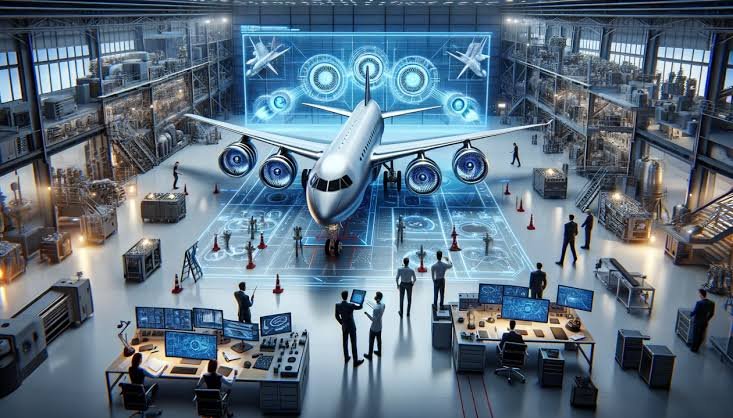Introduction to Autobà
The Rise of Autonomous Vehicles
Autonomous vehicles have rapidly evolved from a futuristic concept to a tangible reality. Advances in technology, especially in artificial intelligence (AI) and sensor systems, have paved the way for the development of self-driving cars. Among these, Autobà stands out as a significant player, promising to revolutionize transportation.
What is Autobà?
Definition and Key Features
Autobà refers to a sophisticated autonomous driving technology designed to offer a fully automated driving experience. It leverages cutting-edge AI algorithms, advanced sensors, and robust computing power to navigate and control vehicles without human intervention. Key features include:
- Real-time Navigation: Uses GPS and AI to determine optimal routes.
- Collision Avoidance: Equipped with sensors to detect and avoid obstacles.
- Adaptive Cruise Control: Maintains safe distances from other vehicles.
- Self-parking: Automates the parking process in various environments.
The Evolution of Autonomous Driving
Historical Perspective
The journey towards autonomous driving began in the mid-20th century with early experiments in automated vehicles. Significant milestones include:
- 1950s: Conceptual prototypes by General Motors.
- 1980s: Introduction of semi-autonomous systems by Mercedes-Benz.
- 2000s: DARPA’s Grand Challenge propelling the field forward.
Key Milestones
Key milestones in the development of autonomous vehicles include:
- 2009: Google’s self-driving car project.
- 2015: Tesla’s Autopilot system.
- 2020: Waymo’s fully autonomous ride-hailing service.
How Autobà Works
Core Technologies
Autobà integrates multiple technologies to achieve full automation, including:
- Lidar: Light detection and ranging for precise mapping.
- Radar: Radio waves to detect objects and measure speed.
- Cameras: Visual recognition for identifying road signs and obstacles.
Sensors and AI
The system relies heavily on AI to process data from sensors, enabling real-time decision-making. Machine learning algorithms enhance the vehicle’s ability to predict and respond to dynamic driving conditions.
Benefits of Autobà
Safety Improvements
Autobà significantly enhances road safety by:
- Reducing Human Error: Eliminates mistakes caused by distraction or fatigue.
- Advanced Monitoring: Continuous monitoring of surroundings for potential hazards.
- Predictive Analysis: AI predicts and mitigates risky scenarios.
Efficiency and Convenience
Autobà offers unparalleled efficiency and convenience, including:
- Time-saving: Automated driving reduces the burden of long commutes.
- Fuel Efficiency: Optimized driving patterns decrease fuel consumption.
- Enhanced Comfort: Smooth and adaptive driving for passenger comfort.
Challenges in Autonomous Driving
Technical Hurdles
Despite its potential, Autobà faces several technical challenges, such as:
- Sensor Limitations: Adverse weather conditions can impair sensor accuracy.
- Computing Power: High processing power required for real-time data analysis.
- Integration: Ensuring seamless integration with existing traffic systems.
Legal and Ethical Issues
Autonomous driving also raises legal and ethical questions, including:
- Liability: Determining fault in the event of an accident.
- Privacy: Handling and securing vast amounts of data collected.
- Ethical Decisions: Programming ethical responses in critical situations.
Autobà vs. Traditional Vehicles
Performance Comparison
Autobà vehicles outperform traditional vehicles in several ways:
- Accuracy: Superior navigation and obstacle detection.
- Responsiveness: Faster reaction times to dynamic conditions.
- Efficiency: Optimized driving reduces wear and tear.
Cost Analysis
While initial costs for Autobà vehicles are higher, long-term savings include:
- Maintenance: Lower maintenance costs due to fewer mechanical parts.
- Insurance: Potentially lower premiums due to enhanced safety features.
- Fuel: Reduced fuel costs through efficient driving patterns.
Current State of Autobà
Industry Leaders
Several companies lead the Autobà market, including:
- Tesla: Known for its advanced Autopilot system.
- Waymo: A pioneer in fully autonomous ride-hailing.
- Uber ATG: Focusing on autonomous freight and ride-sharing services.
Market Adoption
Autobà technology is gradually being adopted worldwide, with key regions including:
- North America: High adoption rates due to technological infrastructure.
- Europe: Strong regulatory support and consumer interest.
- Asia: Rapid advancements in smart city integrations.
The Future of Autobà
Upcoming Innovations
The future of Autobà promises several innovations, such as:
- V2X Communication: Vehicle-to-everything communication for enhanced safety.
- 5G Connectivity: Faster data transmission for real-time decision-making.
- Enhanced AI: More sophisticated AI for better predictive capabilities.
Impact on Society
Autobà is set to transform society by:
- Reducing Traffic Accidents: Enhanced safety measures decrease accident rates.
- Alleviating Traffic Congestion: Intelligent traffic management reduces congestion.
- Improving Mobility: Greater access to transportation for disabled and elderly individuals.
Case Studies of Autobà Implementation
Real-World Examples
Several real-world implementations of Autobà demonstrate its efficacy:
- Waymo in Phoenix: Fully autonomous ride-hailing service.
- Tesla’s FSD Beta: Advanced driver assistance on public roads.
- Uber Freight: Autonomous trucking operations in select routes.
Lessons Learned
Key takeaways from these implementations include:
- Public Trust: Building consumer trust through transparency and safety.
- Regulatory Compliance: Navigating complex regulatory landscapes.
- Technological Refinement: Continuous improvement of AI and sensor technologies.
Autobà and the Environment
Eco-Friendly Technologies
Autobà incorporates eco-friendly technologies such as:
- Electric Propulsion: Reduces reliance on fossil fuels.
- Regenerative Braking: Converts kinetic energy back into electric power.
- Eco-Driving Algorithms: Optimize routes for minimal environmental impact.
Reduction in Emissions
Autobà contributes to environmental sustainability by:
- Decreasing Carbon Footprint: Lower emissions compared to traditional vehicles.
- Efficient Resource Use: Optimized driving conserves energy resources.
- Support for Renewable Energy: Integration with renewable energy grids.
Regulations and Policies
Government Initiatives
Governments worldwide are supporting Autobà through initiatives like:
- Funding for R&D: Financial support for autonomous vehicle research.
- Infrastructure Development: Building smart infrastructure to support Autobà.
- Safety Regulations: Establishing safety standards for autonomous vehicles.
International Standards
International bodies are working towards harmonized standards, including:
- ISO: Developing standards for autonomous vehicle safety.
- UNECE: Creating regulations for automated driving systems.
- SAE: Defining levels of vehicle automation.
Public Perception of Autobà
Consumer Trust
Building consumer trust is crucial for Autobà adoption:
- Safety Demonstrations: Public demonstrations of safety features.
- Transparent Communication: Clear information about technology and safety.
- User Education: Educating consumers on the benefits and usage of Autobà.
Media Influence
Media plays a significant role in shaping public perception:
- Positive Coverage: Highlighting success stories and advancements.
- Addressing Concerns: Reporting on safety and ethical considerations.
- Influence on Policy: Media coverage can influence regulatory decisions.
Autobà and Smart Cities
Integration with Urban Planning
Autobà is integral to the development of smart cities:
- Smart Traffic Management: Coordinated traffic flow to reduce congestion.
- Integrated Mobility Solutions: Seamless integration with public transport.
- Data-Driven Urban Planning: Using data from Autobà for city planning.
Smart Infrastructure
Smart infrastructure supports Autobà by:
- Connected Roadways: Sensors and communication networks for real-time data.
- Automated Parking: Smart parking solutions to optimize space use.
- Renewable Energy Integration: Charging infrastructure for electric Autobà vehicles.
Economic Impact of Autobà
Job Market Changes
Autobà will significantly impact the job market, including:
- New Job Opportunities: Roles in AI, data analysis, and vehicle maintenance.
- Skill Upgradation: Need for retraining in advanced technologies.
- Sectoral Shifts: Changes in industries such as logistics and public transport.
Economic Growth
Autobà can drive economic growth through:
- Increased Productivity: Reducing time spent commuting.
- New Business Models: Opportunities in ride-sharing and delivery services.
- Global Competitiveness: Leading the autonomous vehicle market.
Autobà Safety Measures
Crash Avoidance Systems
Autobà is equipped with advanced crash avoidance systems, including:
- Predictive Analytics: AI predicts and avoids potential collisions.
- Automatic Braking: Emergency braking in case of sudden obstacles.
- Lane Keeping Assist: Ensures the vehicle stays within lanes.
Emergency Protocols
Emergency protocols in Autobà include:
- Fail-Safe Mechanisms: Systems to take over in case of failures.
- Emergency Communication: Real-time communication with emergency services.
- Redundant Systems: Backup systems to ensure continuous operation.
Technological Innovations in Autobà
AI and Machine Learning
Autobà uses AI and machine learning for:
- Behavioral Analysis: Understanding and predicting driver and pedestrian behavior.
- Continuous Learning: Improving performance through data collection and analysis.
- Complex Decision-Making: Handling intricate driving scenarios.
Connectivity and IoT
Autobà benefits from IoT and connectivity innovations:
- Real-Time Updates: Constant updates on traffic and road conditions.
- Vehicle-to-Vehicle Communication: Information sharing for coordinated driving.
- Smart Home Integration: Connectivity with smart home devices for enhanced convenience.
Autobà and Cybersecurity
Threats and Vulnerabilities
Autobà must address cybersecurity threats, including:
- Hacking: Protecting against unauthorized access and control.
- Data Breaches: Securing sensitive data collected by the vehicle.
- Network Attacks: Safeguarding communication networks from attacks.
Protection Strategies
Protection strategies for Autobà include:
- Encryption: Secure communication through encryption technologies.
- Regular Updates: Continuous software updates to patch vulnerabilities.
- Threat Detection: Advanced systems to detect and mitigate potential threats.
Collaborations and Partnerships
Key Industry Partnerships
Collaborations are essential for Autobà development:
- Tech Companies: Partnerships with AI and software firms.
- Automotive Manufacturers: Joint ventures for vehicle production.
- Academic Institutions: Research collaborations for technological advancements.
Research Collaborations
Research collaborations focus on:
- AI Development: Enhancing AI algorithms for better performance.
- Safety Standards: Developing new safety protocols and standards.
- Human-Machine Interaction: Improving user interfaces and interaction models.
Consumer Guide to Autobà
Buying an Autonomous Vehicle
When buying an Autobà vehicle, consider:
- Features: Evaluate the autonomous features offered.
- Safety Ratings: Check safety ratings and certifications.
- Warranty and Support: Ensure comprehensive warranty and customer support.
Maintenance Tips
Maintaining an Autobà vehicle involves:
- Software Updates: Regularly updating the vehicle’s software.
- Sensor Cleaning: Keeping sensors clean for optimal performance.
- Professional Check-ups: Periodic check-ups by certified technicians.
FAQs about Autobà
What is Autobà? Autobà is an advanced autonomous driving technology that uses AI and sensors to enable vehicles to drive without human intervention.
How does Autobà improve safety? Autobà improves safety through advanced monitoring, predictive analysis, and crash avoidance systems that reduce the likelihood of accidents.
What are the main challenges facing Autobà? Key challenges include technical limitations, legal and ethical issues, and ensuring cybersecurity.
How does Autobà impact the environment? Autobà contributes to environmental sustainability by reducing emissions and promoting the use of eco-friendly technologies.
What regulatory measures are in place for Autobà? Various governments and international bodies are developing regulations and standards to ensure the safety and efficacy of autonomous vehicles.
What does the future hold for Autobà? The future of Autobà includes advancements in V2X communication, AI, and smart city integration, promising a more efficient and safer transportation system.
Conclusion
Summary of Key Points
Autobà represents a significant leap in the evolution of autonomous driving, offering numerous benefits such as enhanced safety, efficiency, and convenience. Despite facing several challenges, the technology continues to advance, driven by innovations in AI, sensor systems, and connectivity.
Future Outlook
The future of Autobà looks promising, with potential to transform transportation, reduce environmental impact, and integrate seamlessly into smart city ecosystems. Continued research, collaboration, and regulatory support will be crucial in realizing its full potential.











